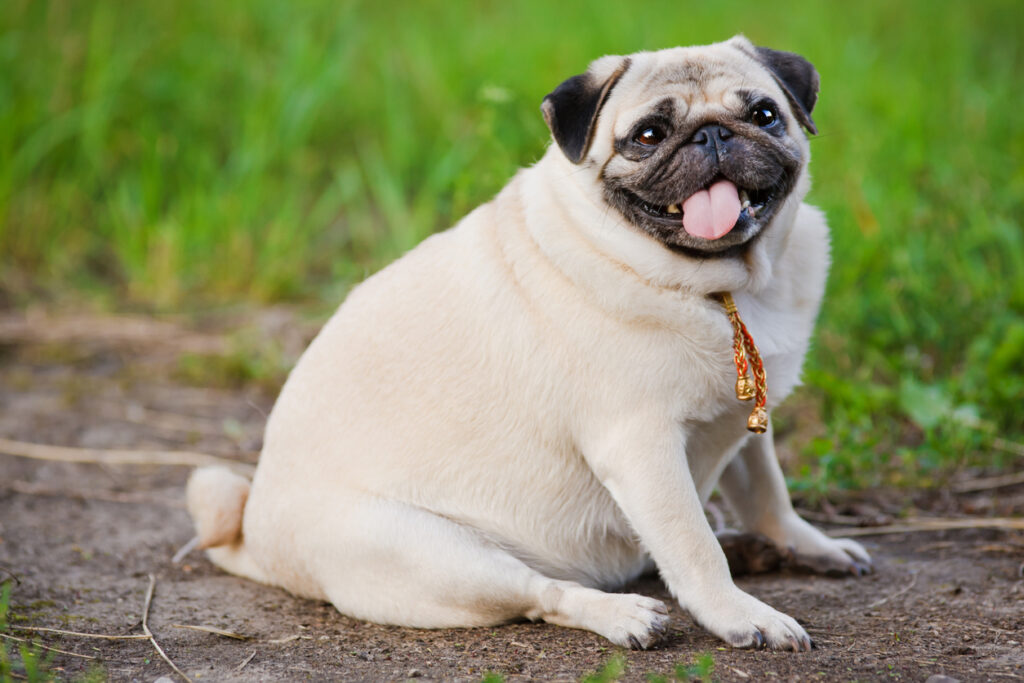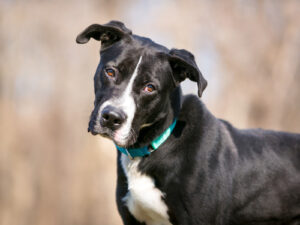How to Help Your Dog Lose Weight
Numerous individuals who own dogs have experienced this scenario where they take their furry companion for a regular veterinary checkup assuming that their pet is healthy, and will receive a clean bill of health. However, during the visit, the veterinarian informs them that their dog is overweight and needs to shed some pounds.
If something similar has happened to you and your dog recently, don’t worry. There are ways that you can help your dog lose weight. Like humans, the best way to help a dog lose weight is through diet changes and increased exercise.
The following piece will provide dog owners with a comprehensive guide on aiding their dogs in shedding excess weight. It will encompass methods to determine if a dog is overweight, and ways in which owners can assist their pets in achieving a healthy weight. Additionally, frequently asked questions regarding canine weight loss will be addressed.
How to Tell if Your Dog is Overweight
There are two main ways that dog owners can tell if their dog is overweight, and that is to look at their body shape and feel their ribs. When looking at your dog from above, do they appear to be round or oval-shaped? Does their belly kind of peak out around their sides? Then there is a pretty good chance that they are overweight.
Additionally, you could also feel your dog’s ribs to check if they are overweight. In most dogs, you should be able to feel but not see a dog’s ribs. However, the ideal body shape does vary depending on a dog’s breed, with some dogs being much more slender than others.
Of course, if your vet tells you that your dog is overweight then this should also be a wake-up call that your furry friend needs to lose a few pounds.

How to Help Your Dog Lose Weight
Dog owners have two primary options for aiding their dogs in shedding pounds: elevating their daily exercise levels and providing them with a weight loss diet dog food. Let’s delve deeper into how owners can incorporate these methods into their daily routine.
Exercise Your Dog More
Increasing the amount of daily exercise that your dog gets is a great way to help them lose weight. Unfortunately, this is easier for some dogs to do than others. If your dog is fairly young and has no other health issues affecting their breathing or mobility, then you can just start doing more activities with your dog that gets their body moving. Here are some examples of great ways to help your dog get moving:
Go for daily walks
Make a habit of taking your dog for a brisk walk at least once a day. If your dog is not used to walking, start with short walks and gradually increase the distance over time.
Play fetch
This is an excellent way to get your dog moving and active. Find a safe, open area and throw a ball or frisbee for your dog to retrieve.
Go for a swim
Swimming is a low-impact exercise that is easy on the joints and can be a fun activity for dogs, especially during the hot summer months.
Older Dogs
In some cases though, being able to exercise an overweight dog poses some challenges. A common example is elderly dogs having arthritis or mobility issues. Luckily, there are still ways that you can get them moving and start to lose weight. For instance, swimming can be a great exercise for dogs with joint issues.
If you are concerned about exercising your dog, asking a vet about what they recommend will help.
Change Your Dog’s Diet
In addition to portion sizes, the quality of the food is also important. Dog owners should look for a high-quality, low-calorie dog food that meets their dog’s nutritional needs. It’s crucial to avoid feeding table scraps or human food, which are often high in calories and can lead to weight gain.
Another tip is to feed multiple small meals throughout the day instead of one large meal. This can help prevent overeating and keep your dog’s metabolism active throughout the day.
It’s also important to keep an eye on your dog’s treats and limit them to healthy options. Many store-bought dog treats are high in calories and can quickly add up. Consider offering low-calorie options like carrots or green beans as a healthy snack.
Remember, weight loss in dogs should be gradual and monitored by a veterinarian. Rapid weight loss can be dangerous and lead to health problems. A vet can help you create a weight loss plan that is safe and effective for your dog’s individual needs.
Does Walking Help a Dog Lose Weight?
Yes, walking can help dogs lose weight, and it is often the easiest exercise for most dog owners to incorporate into their daily routines. It is recommended that you walk most dogs for at least 30 minutes a day, with at least 10 minutes of that time being at a brisk pace when walking for weight loss. Over time, you can increase the amount of time spent walking at a brisk pace as your dog gets into better shape.
What Can You Feed Your Dog When They Need to Lose Weight?
In most cases, it is recommended that you feed your dog a diet dog food when you are trying to have them lose weight. This can either be a diet dog food purchased from the store or a prescription diet dog food that toy purchase from your vet. You should always consult with your vet before switching your dog to a diet dog food.
How Much Should You Feed Your Dog to Lose Weight?
In many cases, overweight dogs are being fed too much dog food per day. As a result, it is often a good start to feed them the recommended portion for their breed or ideal size. You can either ask a vet what this portion size for your dog should be, or look it up online based on your dog’s breed. A great way to keep track of how much you are feeding your dog is to leave a measuring cup right in the food bag. This way, when you go to serve your dog their food, you will be sure you are getting the same portion each time.
In some other cases, dogs will need to be on a calorie deficit in order to lose weight. However, this should always be done with a vet’s recommendation and supervision. As a result, you should only put your dog on a calorie deficit if your vet tells you to do so.
How Long Does it Take for Dogs to Lose Weight?
The duration of weight loss in dogs varies and depends on several factors, such as the dog’s initial weight, the weight loss strategies implemented, and the recommended weight loss rate by the vet.
Ideally, dogs should lose 1-2% of their body weight per week during weight loss. This slow and steady approach is healthier and safer for the dog. However, the time required for the dog to reach its ideal weight varies depending on the individual circumstances. It may take around six to eight months for some dogs to reach their target weight, especially if they need to lose a significant amount of weight to reach their ideal weight for their breed or height.
Conclusion
In conclusion, helping your dog lose weight requires a combination of strategies, including increasing exercise, monitoring their diet, and seeking guidance from a veterinarian. It’s important to take a slow and steady approach, aiming for 1-2% of their body weight loss per week, and regularly monitoring their progress. With patience, commitment, and the right guidance, you can help your furry friend achieve a healthy weight and improve their overall health and well-being. Remember, every dog is unique, and what works for one may not work for another, so always consult with your veterinarian for personalized advice and support.
If you are looking for professional and compassionate veterinarians to help with dog weight loss in Fort Lauderdale, FL. Contact Park Veterinary Hospital today at (954) 561-8387, or Request an Appointment Online.





